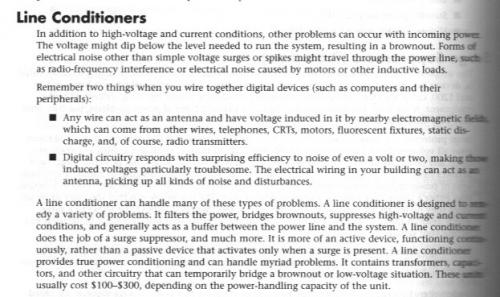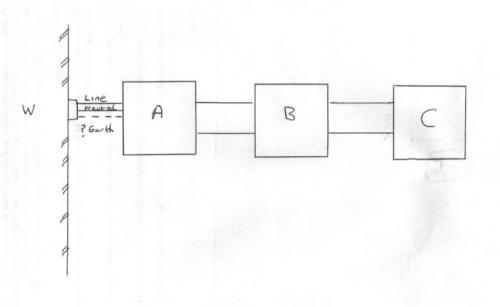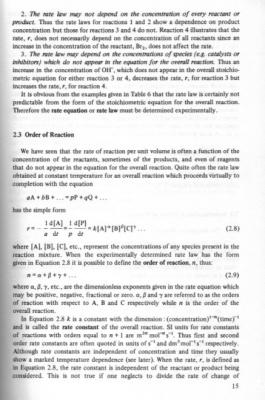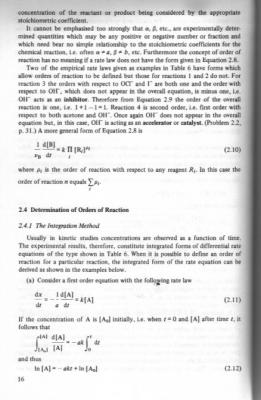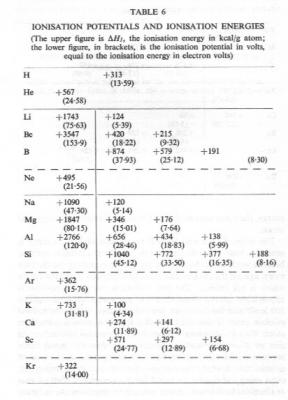-
Posts
18483 -
Joined
-
Last visited
-
Days Won
108
Content Type
Profiles
Forums
Events
Everything posted by studiot
-
A three dimensional object with a hole through it (doughnut) is different from a three dimensional object without said hole. So is the hole nothing or something?
-

Colors in the spectrum and entropy
studiot replied to petrushka.googol's topic in Modern and Theoretical Physics
Actually I don't see this as a dumb question and Boltzman's distribution can be applied to this. However there is only one available energy level unless the light interacts with something and then the system changes anyway. Any colour is a mixture of frequencies of light, whether they are combined or split up by prism. However left to their own devices there is no tendency for say red light to self convert to blue light and unless this can happen there is only onefrequency and therefore energy level available to the red photons. So there is no entropy change when we split light containing red photons and blue photons by prism. The red remains red and the blue remains blue. -

Found It! Countdown From August 2008, "100 Months"
studiot replied to Harold Squared's topic in Earth Science
Curiously enough, shortly after I put up my post#8, all the lights went out. We had a power cut from 12 midnight to 12.30 approx. -

Found It! Countdown From August 2008, "100 Months"
studiot replied to Harold Squared's topic in Earth Science
There 's a guy been the corner of my street for the last 18 or so months with a placard saying "Repent, The World endeth next Month!" -
That's real fine, DrDoggy, We are getting to what you are really after. It does not matter what table you get you electron volt values from, they they should be the same since there is only one definition. What you need to remember from a chemistry point of view is that every reactant and product is in a particualr state and the energy balance of the reaction reflects the energy required to place those reactants and products in that particular state, as well as the energy obtained from/supplied to the reaction. Every table describes the state of the reactants and products (called standard conditions by that table). You may need additional information to translate the reactants or products to the states in their final condition in the reaction equation.
-
That doesn't explain where you want to go next???
-
Please tell an ignoramus what an AGW guy is?
-
OK, as I understand it Mordred please chip in as you see fit. Because of your location you have an unreliable mains electricity supply. You wish to run some mains equipment that is sensitive to mains unreliability. I have called this block C or unit C on my diagram. Electrically it is the intended load. You have purchased units A and B to help with the situation. You do not want units A and B for themselves, just to run unit C (and perhaps D, E etc). First and most important. I have shown you mains electricity supply as a wallsocket W with three terminals. Line (some wrongly call it live) Neutral Earth Is this correct? What indications are there for earthing of units A and B (and load C)? I have, for the time being only showed two connections here (line and neutral) How many separate wires are there in the cable that connects ~ W to A A to B B to C Now I am of the opinion that your unit A is what is properly called a line conditioner. Any other more fnacy name is just advertising fluff. Does this sem to describe it?
-
Physics in the UK suffers from the lack of an upper level offering a career path as in Chartered Engineer. Many physics graduates used to join one of the many government research eastablishments, but our government in its wisdom has dismantled most of these. Of the pure physicists I have come across over the years. Two went in to the building and construction industry and one eventually became a director of a multinational and a director of the Chartered Institute of Marketing. One took a Phd and now works at CERN And one became an undertaker.
-
This is the most useful thing you have said so far and is a simple short answer to a question we asked at the beginning. As a non electrical expert (no disrespect intended) why do you keep guessing what an electrical expert might need/want to know, instead of putting a lot of effort into telling us things of uncertain nature. I will post a diagram later of what I think you have told us so that we can proceed.
-
I understand that English is not your first language, but I am seriously struggling to understand what you are trying to achieve. Mordred has voiced my concerns If you can upload photos to dropbox, why can you not upload them here to the site? I really need a connection diagram to understand how you are connecting these two boxes and what you are expecting to happen. The first rule of (electrical) servicing is Divide the setup in to sections and find out which section is not working properly. So Mordred's suggestion to try different loads on the stabiliser and report the outcomes is really sound. If your only tools are mechanical hand tools how do you know what voltage the stabiliser is giving?
-
I am trying very hard to help, but your linked page about the inverter leads to a virus infected webpage, infected with the Google Survey Scam. You really need to explain properly what your issue is and why you have apparantly connected the outputs of two electrical devices together in opposition.
-
Don't forge that ionisation energy and ionisation potential is defined to the removal of one electron from the free atom in a gaseous state. I costs quite a lot of energy to get that atom from its normal state, combined with chlorine in a lattice to this state. The lattice energy of NaCl is 782.1 kJ/m The heat of hydration is -777.8 kJ/m The pidgin scientific English will not win friends and influence people, nor make them think you are serious. If you are serious we can discuss apparatus commensurate with the definition of ionisation potential that will register the 5.14 volts on a (suitable) voltmeter in producing sodium ions and electrons.
-
I hope you noticed he makes very clear that all the exponents should be determined experimentally. I meant to say this before.
-
Here is an extract from a university level text that has many examples to look at. Chemical Kinetics and Reaction Mechanisms by Wilkinson.
-
Forgive me but I thought a projector projected not reflected, hence its name?
-
Aren't (nearly) all armed police units quasi military? As a matter of note I had much more confidence and a better relationship with the proper army patrolling Heathrow when I worked there in the 1970s, than I do in the schoolboys with tommyguns, now patrolling Lulsgate.
-
I don't have any idea where you 1.5 volts comes from, and your tone is not receptive towards help. Anyway here is a table of first ionisation potentials in volts. You will note that the first ionisation potential for sodium is 5.14 volts.
-
14 on one day wasn't a bad tally by the Royal Irish Constabulary, and makes the claim of 70 total since 1920 even more amazing.
-
So was I suprised since Ireland was still part of the UK in 1920, so should include figures like these.
-
Does this figure include Northern Ireland, or has the province left the UK while I was away and not looking ? Another figure that challenges your idyllic view is the rate of deaths in police vehicle 'accidents' This is rated at about 5 per year http://www.dailymail.co.uk/news/article-1342723/Met-police-traffic-accidents-day-Six-people-killed-years.html Perhaps not the best link, but there are plenty available.
-
This is the correct term when considering these types of effects. You will know you fully understand it when you can explain to someone how a (light) projector can show black on a white screen.
-
Don't know what they do these days, but the OU uswed to have a good third elvel course on complex analysis, that was way beyond QM requirements. I would have thought you would only need basic complex number theory, rather than the full works concert of the theory of the complex variable. QM involves the complex solution of partial differential equations (There also used to be a good OU third level course on these which would be very useful). Other required maths will no doubt be explained in the course, some is quite specialised such as the Bra and Ket notation. EM does indeed involve much vector mechanics, in terms of calculus and geometry. A good summer read would be the superb intro book by Matthews called - you guessed it - Vector Calculus (Springer Verlag undergraduate books). Another good summer read here is Electromagnetism for Electronics Engineers by Carter (Chapman and Hall).
-

Electrical questions; wire gauges and winding sizes.
studiot replied to Knuckleballerr's topic in Classical Physics
Good Morning, knuckleballerr, and welcome. Just a note, we have an engineering section and a number of very good engineers as contributing members. Electrical wiring? Yes the decision to use stranded or solid wire is basically a mechancal one. This decision extends far beyond automotive applications and is more important than just 'advantages' of one over the other. What happens if you repeatedly bend a length of solid core wire back and fore? It breaks readily. Stranded wire is much more resiliant to repeated flexing. Solid core wire is cheaper. So in situations where the wire is subject to vibration such as in an automobile or a washing machine you should use stranded wire. In some situations such as the windings on a motor or generator the wire is supported along its whole length so vibration is not an issue. In this case so the cheaper solid core can be used. However you have to make the winding in the first place so sufficient flexibility for this is obtained by using thinner wire. Note there are other constraints with motor windings. In a building situation there is little vibration so again solid core wire takes the vote on cheapness for fixed wiring, but stranded is used for the added flexibility of connecting wire to both fixed and portable equipment. It should be noted that proper connection techniques differ for solid and stranded wire, so care should be taken fitting one to a connection designed for the other. Engineering is always a balance between conflicting requirements and cost is often one of these. Your auto alternator is one of these. The cheaper ones have lower spec because those that are cheaper (and easier) to make have fewer poles and lighter bearings than the heavier duty ones.- 1 reply
-
1
-

A misunderstanding about multiplication
studiot replied to Deepak Kapur's topic in Classical Physics
I've not come across that one before. +1


